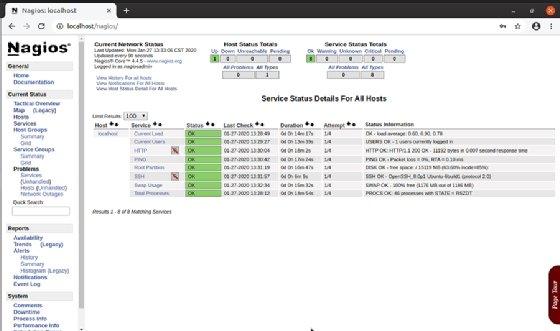Continuously Monitor the Status of Services
Real-time (data) monitoring is the delivery of continuously updated information streaming at zero or low latency.
IT monitoring involves collecting data periodically throughout an organization's IT environment from on-premises hardware and virtualized environments to networking and security levels, into the application stack -- including those in the cloud -- and out to software UIs. From this data, IT staff analyze system performance, flag anomalies and resolve issues.
Real-time monitoring ups the ante by providing a continuous low-latency stream of relevant and current data from which administrators can immediately identify serious problems. Alerts can be more quickly routed to appropriate staff -- or even to automated systems -- for mitigation. By tracking real-time monitoring data over time, organizations can reveal and predict trends and performance.
How does real-time monitoring work?
Real-time monitoring relays the active and ongoing status of an IT environment. It can be tuned to focus on particular IT assets and at desired granularity.
Types of real-time data include the following:
- CPU and memory utilization;
- application response time;
- service availability;
- network latency;
- web server requests; and
- transaction times.
Generally, real-time monitoring software displays relevant data on customizable dashboards. Administrators can choose to display expected data ranges and formats as numerical line graphs, bar graphs, pie charts or percentages. The displays of the data can be arranged according to priorities and administrator preferences.
Benefits of real-time monitoring
Collecting real-time monitoring data helps IT managers immediately evaluate and react to current events in the IT environment. Moreover, organizations can log and track real-time data over time to identify trends and better recognize abnormalities that fall outside set parameters of system and application behavior. This is known as trend monitoring.
R eactive monitoring vs. proactive monitoring: Reactive monitoring is a long-established troubleshooting method in IT organizations and data centers. The defining characteristic of this process is revealed by its name: It reacts to triggers that signal an event has occurred.
By comparison, proactive monitoring applies monitoring data without requiring a trigger event. In this approach, a monitoring tool can predict problems -- such as a memory leak -- that, if unresolved, could crash an application or an entire server. AI and machine learning are increasingly applied to proactive monitoring to comb through data, track cyclical patterns and flag abnormal behaviors.
Examples of real-time monitoring
Real-time monitoring can be used in many industries and situations, particularly in IT and manufacturing, to enable quick reaction to momentary events:
- Server and data center management can use real-time data to predict imminent equipment failures and maintenance. Additionally, using streaming telemetry instead of simple network management protocol to collect network data paints a more accurate picture of network performance.
- In software development and testing, synthetic and passive monitoring use real-time data to simulate user interactions with software, see what customers see and flag problems before the application is released to production.
- Contact centers can use real-time data for queue and staff management, to ensure queue uptime and to report statistics about service.
- In sales, agents can receive an alert when customers are interested in high-value or high-margin items.
- Web store implementations can collect and analyze streamed data to flag missed sales opportunities due to low inventory. They also use AI to detect coupon fraud where a customer uses a code multiple times against its terms.
- Real-time data collection for vehicle fleet management can help catch reckless, sleepy and impaired drivers as well as maximize fleet utilization.
- RFID tracking in retail can enable real-time updates on inventory and theft detection.

Real-time monitoring tools and vendors
Below are a few examples of real-time monitoring tools and vendors; this is not a comprehensive list.
- BMC Software TrueSight Capacity Optimization
- Cisco AppDynamics
- HelpSystems Vityl Capacity Management
- Nagios
- Quest Software
- SignalFX
- SolarWinds Server & Application Monitor
- Splunk App for Infrastructure
- VMware Capacity Planner
This was last updated in May 2020
Continue Reading About real-time monitoring
- Explore the benefits, limitations of time-series monitoring in IT
- A glossary of 12 network management and monitoring key terms
- AWS monitoring best practices extend beyond CloudWatch
- Compare Grafana vs. Datadog for IT monitoring
- Learn how New Relic works, and when to use it for IT monitoring
Source: https://www.techtarget.com/whatis/definition/real-time-monitoring